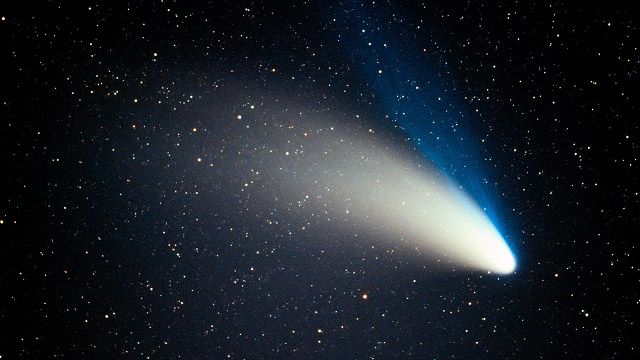 |
| Comet ISON |
C/2012 S1 (Wikipedia)
C/2012 S1, also known as Comet ISON or Comet Nevski–Novichonok, is a sungrazing comet discovered on 21 September 2012 by Vitali Nevski (Виталий Невский, Vitebsk, Belarus) and Artyom Novichonok (Артём Новичонок, Kondopoga, Russia). The discovery was made using the 0.4-meter (16 in) reflector of the International Scientific Optical Network near Kislovodsk, Russia and the automated asteroid-discovery program CoLiTec. Precovery images by the Mount Lemmon Survey from 28 December 2011 and by Pan-STARRS from 28 January 2012 were quickly located. Follow-up observations were made on 22 September by a team from Remanzacco Observatory in Italy using the iTelescope network. The discovery was announced by the Minor Planet Center on 24 September. Observations by Swift in January 2013 suggested that C/2012 S1's nucleus was around 5 kilometers (3 mi) in diameter.
Comet ISON is apparently a previously unknown comet that will be orbiting around--and very close to--the Sun; after which it will be be visible to the naked eye as it continues its orbit past the Earth. I have heard that it possibly may appear as large as the Moon. YouTube is on fire with Comet ISON videos, from many different perspectives. For the casual seeker, looking up news articles may be better. What is rather creepy is that this is the one, and probably only orbit of this comet into the solar system. For all we know, it could crash into the Sun. The Sun will at least break it up somewhat, possibly leading to it's demise before our very eyes. There is an element of the unknown here. Some small debris has been hitting the Earth for several weeks now.
The comet will apparently be visible to the naked eye in a few days at predawn. I have heard the date of November 28 as the beginning of the faze where it will be easy to spot in the night sky. I have also heard that we may need binoculars to spot it. The "experts" seem to be at odds about how this will unfold. December 14 seems to be the date where it will be the most visible. Naturally it will be best observed away from the urban lights. Even a small distance away from urban centers make a big difference.
.

No comments:
Post a Comment